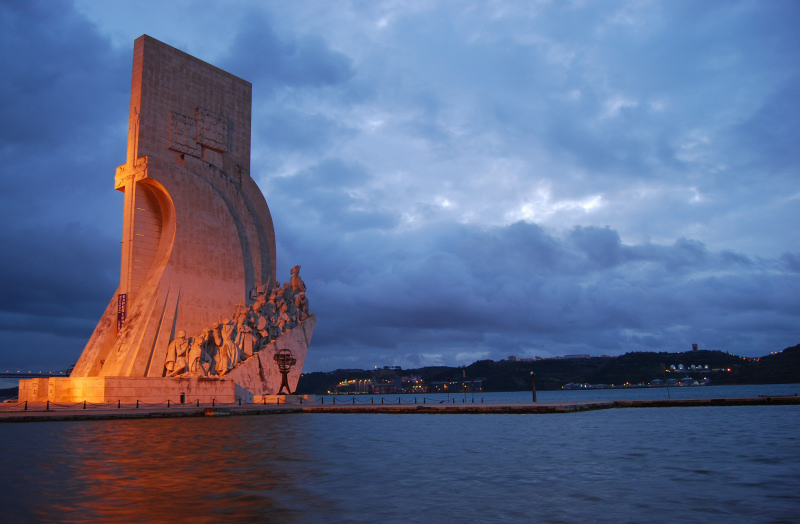
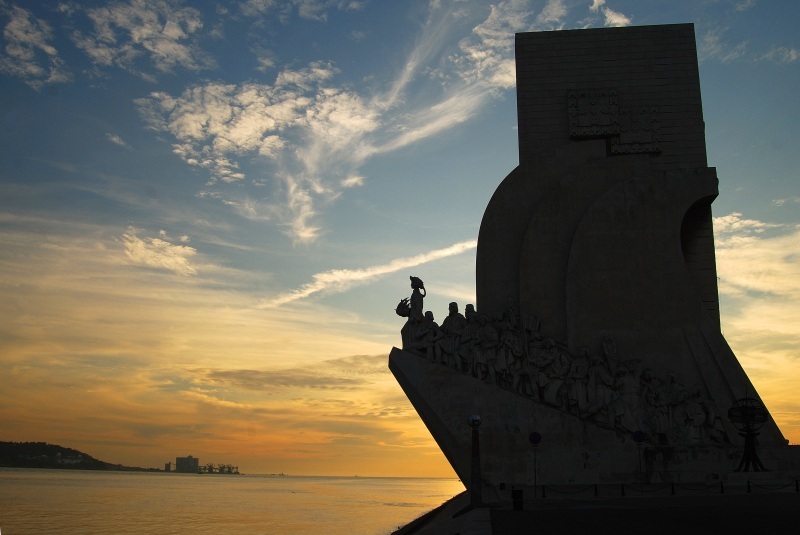 First, the most important part of this post. The two breathtaking photographs shown above are the work of Aires dos Santos. I have spent hours admiring his extraordinary work on the Internet – every subject imaginable – each and every photograph beautiful and memorable. I encourage everyone reading this post to view his work at http://www.trekearth.com/members/AiresSantos/. You will not be disappointed.
First, the most important part of this post. The two breathtaking photographs shown above are the work of Aires dos Santos. I have spent hours admiring his extraordinary work on the Internet – every subject imaginable – each and every photograph beautiful and memorable. I encourage everyone reading this post to view his work at http://www.trekearth.com/members/AiresSantos/. You will not be disappointed.
The Monument to the Discoveries is located on the estuary of the Tagus river in Lisbon, Portugal – the site where countless ships sailed into the unknown during the great Age of Exploration of the 15th and 16th centuries. During these 200 years the Europeans extended their cultures to virtually the entire globe. The Portuguese were second to none in their curiosity and daring. Henry the Navigator, Vasco da Gama, Saint Francis Xavier, Ferdinand Magellan, Pedro Escobar – their names echo through the annals of discovery. Their reach included the Americas, India, Africa, Asia, and the Pacific islands.
The 52-meter high monument is in the shape of the prow of a ship. The bow faces the river – the stern side features a sword reaching the full height of the structure. On the sides of the monument are representations of 33 Portuguese instrumental in the quest for discovery – explorers, scientists, artists, missionaries, and cartographers.
The monument was conceived and executed by artist Cottinelli Telmo and sculptor Leopoldo de Almeida as part of the Portuguese World Fair in 1940. The original materials were perishable, so it was rebuilt in concrete in 1960 to commemorate the 500th anniversary of the death of Henry the Navigator. A stunning mosaic wind rose forms the pavement leading up to the monument. Displayed within the wind rose is a world map with the routes of famous Portuguese explorers. The mosaic was a gift from South Africa in 1960.
Today we have still have explorers – they launch into space and explore the great depths of the oceans – they climb mountains and risk their lives in caves. Despite modern technology and all precautions, some die. We hear about their deaths – we celebrate their courage and mourn their loss. But think about all those lost at sea during the Age of Discovery – those countless souls who sailed from the estuary of the Tagus river in Lisbon, or from England or France or the Netherlands or Spain – not knowing their destination or their fate. Their names and faces are not found on the Internet or in history books. Think of them also when you admire the beauty of the Monument to the Discoveries…
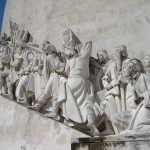
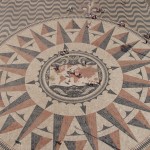
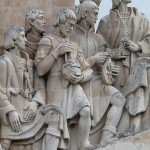
Kobus Horn said:
I would love to make contact with person or persons that is research on the Age of Exploration. I am from South Africa, and found 2 Portuguese shipwreck survival camps on our coast. After 23 years of walking our shore line, much is know of the Portuguese wrecks on our coast. Also many people will not like what I say, but!!!! Portuguese shipwreck survivors were the first settlers on our south african coast and land, not out of free will, but they were settlers. so one of my points of interest is that the first settlers in south africa is from Portuguese ships that was wrecked on our coast. I do need help, to complete my work, and also that I can compare my work with people that is active in research concerning Portuguese shipwreck, how they came by to be, and my objective is to claim that The Portuguese shipwreck survivors was and is the first Settlers in South Africa?
Regards
Kobus Horn